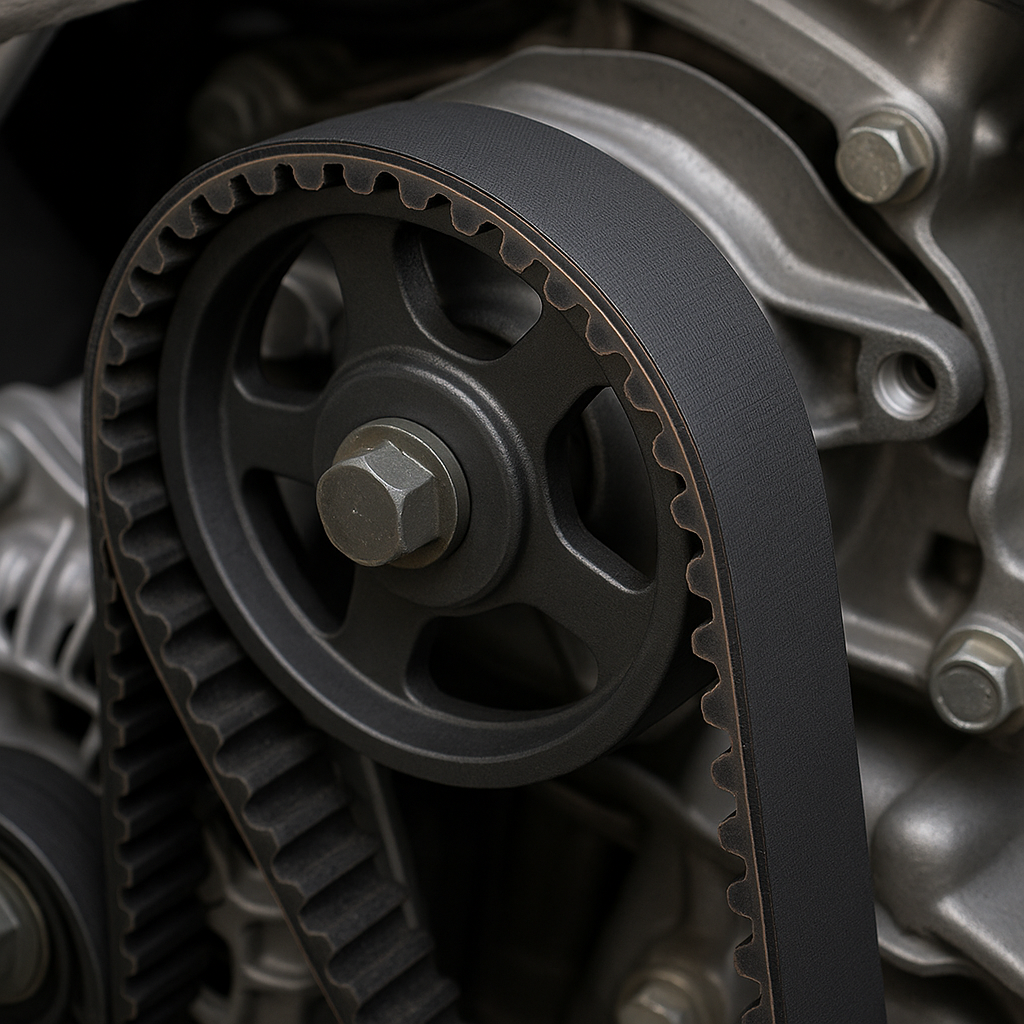Timing Belt Replacement Guide: When, Why, and How Much
Timing Belt Replacement Guide: When, Why, and How Much
When it comes to your car’s engine, few components are as important as the timing belt. It keeps your engine’s internal parts moving in perfect harmony, ensuring smooth and reliable performance. But if it wears out or snaps, it can lead to serious and expensive engine damage. This guide explains everything Irish drivers should know about timing belts — when to replace them, what symptoms to watch for, and how much it usually costs.
What does a timing belt do?
The timing belt synchronises the movement between the crankshaft and camshaft, allowing the valves and pistons to work together precisely. If it slips or breaks, this timing is lost — and on many engines, this can cause pistons to hit valves, resulting in severe engine failure.
When should it be replaced?
Replacement intervals vary depending on the make and model, but most cars require a new belt every 60,000–120,000 miles (100,000–190,000 km) or every 5–7 years, whichever comes first.
If you don’t know when your car’s timing belt was last changed, it’s safest to replace it as soon as possible, especially before a long trip or NCT test.
Signs your timing belt needs attention
-
Whining or squeaking noise from the belt area
-
Rough idling or loss of engine performance
-
Visible cracks or wear on the belt
-
Water pump leaks or tensioner noise
-
Unknown service history on a used car
Why replace the whole kit?
A proper timing belt kit usually includes:
-
The belt itself
-
Tensioner and idler pulleys
-
Water pump (in most engines)
-
Mounting bolts or seals
Replacing all components together prevents future failures and saves labour costs. It’s always best to install a complete kit instead of changing only the belt.
Timing belt vs. timing chain
Some modern engines use a timing chain instead of a rubber belt. Chains generally last longer but can still wear over time. Belts, however, are made of rubber and must be replaced at regular intervals due to age and heat.
How much does it cost in Ireland?
The cost depends on your car’s engine and brand:
-
Small petrol/diesel car: €120–€220 (kit with water pump)
-
Medium or family car: €180–€350
-
Larger or performance car: €300–€600+
Labour costs vary, but buying a complete kit often reduces the total time needed in the workshop.
DIY or mechanic?
Changing a timing belt is a precise job that requires locking tools, torque settings, and mechanical knowledge. If the timing is set incorrectly, the engine can be damaged. For most drivers, it’s safer to have a qualified mechanic do the job.
Recommended brands
For the best results, choose trusted manufacturers such as INA, Gates, Dayco, SKF, or ContiTech. These brands produce high-quality OE-equivalent parts that meet or exceed factory standards.
Finding the right kit for your car
To find the correct timing belt kit:
-
Visit easycarparts.ie
-
Enter your registration number or make and model
-
Go to Engine → Belt Drive → Timing Belt Kit (with water pump)
-
Compare brands, OE numbers, and product details
If you’re unsure, simply message us with your car’s reg number and engine size, and we’ll help you find the exact kit for your vehicle.
Common questions
Q: What happens if the timing belt snaps?
A: On most engines, it can cause valves to hit the pistons, leading to costly damage. Always replace it before it fails.
Q: Should I replace the water pump too?
A: Yes, if the pump is driven by the same belt. It’s much cheaper to replace it during the same job.
Q: My car has low mileage. Should I still replace it?
A: Yes. Even if your mileage is low, belts degrade with age. Time is just as important as distance.
Q: Can I check the belt myself?
A: Some covers can be removed for inspection, but even if it looks fine, it might still be weak. Stick to the recommended interval.
Quick checklist for drivers
-
Check if your belt has been replaced before
-
Always use OE-quality parts
-
Replace belt, tensioners, and water pump together
-
Add a sticker showing the date and mileage of the replacement
-
Keep your invoice for service history or NCT
